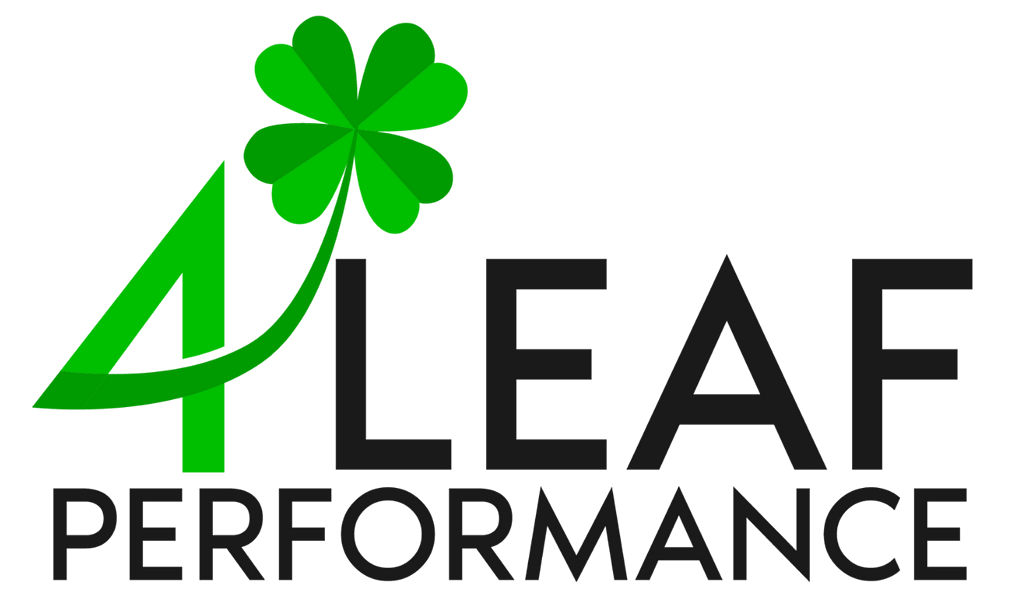Free snacks, fun lounges, and ping-pong tables were once seen as signs of a thriving workplace. But in 2025, these surface-level perks are no longer enough for your company’s talent retention strategy.
A recent survey by Boston Consulting Group found that 28% of workers across eight major economies—including the US, UK, Canada, and Australia—plan to leave their jobs this year. That number should catch the attention of any business owner looking to build long-term stability.
So what’s driving team members to leave? The data points to inadequate salaries, limited career development, lack of trust in leadership, and poor work-life balance. In other words, the issue isn’t about perks—it’s about more profound organizational misalignment.
If your business is starting to feel the effects of turnover—or if you’re looking to stay ahead—it’s time to re-evaluate your talent retention strategy. Today’s most effective retention strategies focus on purpose, meaningful work, growth opportunities, and flexibility. These are no longer “nice-to-haves”—they’re part of the new baseline.
Why the Perks-Only Model is Outdated
Over the past decade, many companies have leaned heavily into perks to boost morale and reduce turnover, offering everything from free lunches to in-office nap pods. These extras made headlines and shaped people’s expectations of “great places to work.” But while perks might help attract attention, they no longer drive long-term engagement or loyalty.
The modern workforce is more focused on meaningful work, fair compensation, and clear paths for growth. When team members feel disconnected from a company’s mission, undervalued in their roles, or unsure about their future, no amount of snack bars or game rooms will convince them to stay.
Research from SHRM backs this up. Team members now rank respectful treatment, trust in leadership, job security, fair pay, and the opportunity to use their skills as the top factors in job satisfaction. Perks didn’t make the list.
If your talent retention strategy relies too heavily on surface-level benefits, it’s likely falling short. While perks can support a positive culture, they can’t replace core values like fairness, purpose, and development. Today’s retention strategies need to focus on these areas.
What this means for business owners is simple: If you want to build a strong team retention strategy, it starts with creating a work environment where your team feels respected, supported, and aligned with the company’s direction. Perks can still play a role but shouldn’t be the foundation.
The Business Case for Purpose-Led Retention
Retaining great people directly impacts performance, productivity, and profitability. High turnover disrupts workflow, delays progress, and increases the time and cost of recruiting and onboarding. In a competitive labor market, replacing top performers often takes longer and costs more than expected.
A strong talent retention strategy reduces those disruptions by building stability into your operations. When team members feel connected to your company’s mission and see a future for themselves, they’re more likely to stay, contribute at a higher level, and engage in continuous improvement.
Data supports this approach. A joint study by Gallup and Workhuman found that team members who receive meaningful recognition are 68% less likely to feel burned out and 55% less likely to look for external job opportunities. Purpose-driven environments also show higher engagement, stronger collaboration, and better overall results.
There’s also a broader challenge on the horizon: As the demand for specialized skills increases, companies will face ongoing talent shortages. Businesses that rely on transactional perks rather than meaningful retention strategies will struggle to keep up. Companies that invest in purpose, culture, and growth opportunities are better positioned to retain their high performers—especially when competition for top talent intensifies.
Building a purpose-led team retention strategy doesn’t require a massive overhaul. It starts by understanding what your team values most and aligning your retention efforts with those values. When the work matters and team members feel they’re contributing to something bigger, they’re more likely to stick around—and bring others with them.

What Works: The Core Pillars of Retaining Talent in 2025
Below are the key pillars that businesses should prioritize in 2025 to build retention strategies that work.
Fair Pay and Transparent Compensation
Let’s start with the basics—pay matters. If your team doesn’t feel fairly compensated, no amount of culture-building or recognition will keep them long-term.
Offering competitive salaries is one of the most direct and effective ways to retain employees. According to SHRM, compensation consistently ranks as one of the top factors in job satisfaction. That includes more than just base pay. Your strategy should account for inflation, cost of living, experience, and local industry standards.
Equally important is transparency. When team members understand how pay decisions are made—and feel they have room for growth—they’re more likely to trust leadership and stay engaged. Businesses can also strengthen their team retention strategy by tying benefits or incentives to tenure, such as retention bonuses, increased PTO, or stock options.
Mission, Meaning, and Purpose
Top performers want to work for companies that stand for something. When team members connect with your mission and feel like their work contributes to a greater goal, their engagement and loyalty naturally increase.
Integrating purpose into your talent retention strategy doesn’t mean rewriting your company’s mission statement. It means consistently reinforcing how each person’s work supports that mission. This can happen in 1:1 meetings, team celebrations, or through internal communications that share wins and progress toward larger goals.
Purpose also helps differentiate your company in a competitive job market. As people rethink what they want from work, businesses that lead with meaning attract and retain stronger teams.
Career Development and Internal Mobility
Lack of growth is one of the most common reasons team members leave. People who feel like they’ve hit a ceiling will start looking elsewhere.
Providing clear paths for development is essential for any long-term retention strategy. This includes:
- Offering mentorship and coaching opportunities.
- Creating individual development plans.
- Supporting upskilling through training programs or certifications.
- Encouraging internal mobility: lateral moves can be just as valuable as promotions.
Investing in growth is good for the team, as it builds internal bench strength, reduces hiring costs, and improves succession planning.
Flexible Work Models and Autonomy
The past few years have shifted workplace standards. Flexibility is no longer a bonus—it’s a basic retention strategy.
Remote and hybrid work options offer team members more control over their time, improving focus and reducing burnout. Even for roles that require in-person work, offering flexible schedules or compressed workweeks can make a difference.
Autonomy also plays a big role in retention. When people are trusted to manage their work without being micromanaged, they feel more valued and are more likely to stay. A strong team retention strategy should include flexibility where possible and structure where necessary, with clear communication around both.
Engagement, Connection, and Belonging
Engaged teams stick around. When people feel connected to their work, their peers, and the company’s purpose, they’re more motivated and less likely to leave.
There are several practical ways to retain employees through engagement:
- Foster strong team dynamics with cross-functional projects or shared goals.
- Conduct regular stay interviews to understand what motivates top performers—and what might push them away.
- Communicate openly about company values and include team members in conversations that impact the business.
Team members who feel heard, included, and valued become deeply embedded in the organization, making them more likely to grow with the business instead of out of it.
Recognition That Resonates
Recognition isn’t just a feel-good gesture—it’s a strategic tool. According to research from Gallup and Workhuman, meaningful recognition significantly reduces burnout and increases retention.
The key word here is meaningful. Recognition needs to be timely, specific, and aligned with the company’s values. This can include:
- Public shoutouts in meetings or internal platforms.
- Personalized thank-you messages from leadership.
- Spot bonuses or additional time off for standout contributions.
Combining monetary and non-monetary recognition ensures your retention strategies address both tangible and emotional needs.
Supportive, Skilled Leadership
No team retention strategy works without capable managers. Studies show that nearly half of all team members who quit do so because of poor leadership—not necessarily the job itself.
Effective managers don’t just delegate tasks—they support growth, communicate clearly, and address issues with consistency and fairness. Businesses should:
- Train managers to coach rather than micromanage.
- Provide tools for conflict resolution and performance feedback.
- Reinforce the importance of consistency, especially when setting goals or enforcing policies.
Your team’s direct experience with leadership is one of the strongest predictors of whether they stay or leave. Investing in leadership development has a direct return on retention.
Burnout Prevention Through Culture and Clarity
Burnout doesn’t just result from long hours—it also results from a lack of clarity, unfair treatment, and overwhelming workloads.
Gallup research found that burnout is more closely tied to how people experience their jobs than the number of hours they work. To prevent burnout:
- Ensure workloads are manageable and clearly defined.
- Give teams the tools and resources to do their jobs well.
- Offer flexible scheduling or paid time off that’s encouraged (not just listed in a handbook).
Burnout prevention isn’t about pushing people harder but supporting them better. When your team feels balanced and respected, they’re more likely to perform consistently and stay longer.

Targeted Strategies: Retention by Role, Group, or Experience
Not all turnover looks the same—and not all retention strategies should be one-size-fits-all. While company-wide initiatives are important, the most effective organizations also take a targeted approach by focusing on specific roles, groups, or experience levels where turnover risk is higher.
Start by reviewing your internal data. Are certain departments experiencing more churn? Are mid-career professionals or new hires leaving at higher rates? Use exit interviews, stay interviews, and internal surveys to identify patterns. From there, you can design focused interventions that address pain points instead of broad assumptions.
Here are a few examples of how targeted strategies can support a more effective talent retention strategy:
Support New Hires with Structured Onboarding and Socialization
Turnover is often highest within the first year. A new team member’s early experience can make or break their long-term engagement. Go beyond the basics of onboarding and create an intentional process that helps new hires feel connected to the team, aligned with the company’s mission, and confident in their role.
Pair new team members with mentors, offer clear role expectations from day one, and schedule check-ins at regular intervals to track progress and address early challenges.
Address High Turnover in Specific Roles
If you’re consistently losing team members in a particular position or department, it’s worth a deeper look. Are the job responsibilities clearly defined? Is the workload sustainable? Are there growth opportunities within the role?
Once you identify the root cause, you can adapt your team retention strategy with changes like job redesign, cross-training, or adjusted performance standards.
Create Tailored Programs for Underrepresented Groups
Retention gaps often appear across gender, generational, or cultural lines. A one-size-fits-all approach may not support every team equally. Use focus groups or anonymous feedback channels to better understand what underrepresented groups in your business value—and what may be pushing them out.
Offering flexible work arrangements, mentorship opportunities, or leadership pipelines tailored to specific groups can make a meaningful difference.
Re-Engage Mid-Career Talent
Team members in the middle of their careers often face unique challenges: career stagnation, unclear paths to advancement, or a lack of fresh opportunities. These are also the team members who often carry institutional knowledge and leadership potential.
Retention strategies for this group might include stretch assignments, leadership training, or lateral moves that reignite interest without needing a full role change.
Retain Top Performers with Proactive Development and Recognition
Your high-performing team members are the most likely to attract outside offers. Don’t wait until they hand in their notice to show their value. Build a talent retention strategy that includes proactive check-ins, customized development plans, and visibility into future growth opportunities.
Use your data to spot high-potential individuals early and work with them to co-create a career path that keeps them invested.
Creating a Talent Retention Strategy That Works
Building a sustainable talent retention strategy doesn’t require starting from scratch. It requires a focused, intentional process that combines company-wide improvements with role-specific insights. When done well, it becomes a long-term asset—not just a short-term fix.
Here’s a practical step-by-step approach you can follow to design a strategy that fits your business:
Benchmark Turnover Internally and Externally
Start with the numbers. Look at your turnover data across time and across roles. Are certain departments or levels experiencing more exits? Then, compare your figures with industry benchmarks. If your turnover rate is higher than average, you’ll need to dig into the reasons behind it.
This step will help you determine whether you need broad-based, targeted, or a mix of both retention strategies.
Identify What Your Team Actually Values
A strong team retention strategy is built on insight, not assumptions. Use tools like anonymous surveys, stay interviews, and informal check-ins to understand what keeps your current team members engaged—and what might cause them to leave.
Focus on the areas that consistently show up in feedback, such as career growth, work-life balance, or management support. These themes will shape the core of your approach.
Prioritize What You Can Do Well
You don’t need to implement every best practice at once. Focus on two or three ways to retain employees that align with your culture, resources, and business model.
For example, if remote work isn’t an option, put more energy into flexible scheduling and burnout prevention. If budgets are tight, prioritize personalized recognition and strong onboarding processes over new perks.
The goal is progress, not perfection.
Align Managers and Leadership Around the Plan
Managers play a key role in whether your talent retention strategy succeeds or fails. Make sure they understand the importance of retention—and give them the training and tools to lead in a way that supports it.
This includes communicating consistently, setting clear standards, recognizing wins, and addressing issues early. When leadership is aligned, retention becomes a shared responsibility—not just an HR initiative.
Track, Measure, and Adjust as You Go
Retention isn’t static. Revisit your strategy regularly by reviewing turnover data, team feedback, and engagement trends. Look for shifts in sentiment, new pressure points, or areas where changes are working well.
Build in simple checkpoints—quarterly or biannually—where you evaluate what’s working and where to improve. This will help you evolve your retention strategies over time without overhauling them every year.

Ditch the Ping Pong Table (Unless It’s Part of a Bigger Picture)
Perks might still help shape a positive environment, but they’re no longer enough to keep top performers from leaving. In 2025, building a strong talent retention strategy means focusing on what your team truly values: fair pay, purpose, flexibility, and growth.
Retention doesn’t come from one initiative—it’s the result of consistent effort across leadership, culture, and communication. The most effective retention strategies are grounded in trust, clarity, and alignment between your business goals and your team’s day-to-day experience.
If you want to build a team retention strategy that lasts, skip the gimmicks and invest in what really moves the needle.
At 4 Leaf Performance, we help business owners and leadership teams develop customized, people-first strategies that drive long-term results. Whether you’re building your first retention plan or refining what you already have, our business consulting services are designed to support you every step of the way.
Ready to create a team that stays, grows, and performs at the highest level? Let’s talk.



